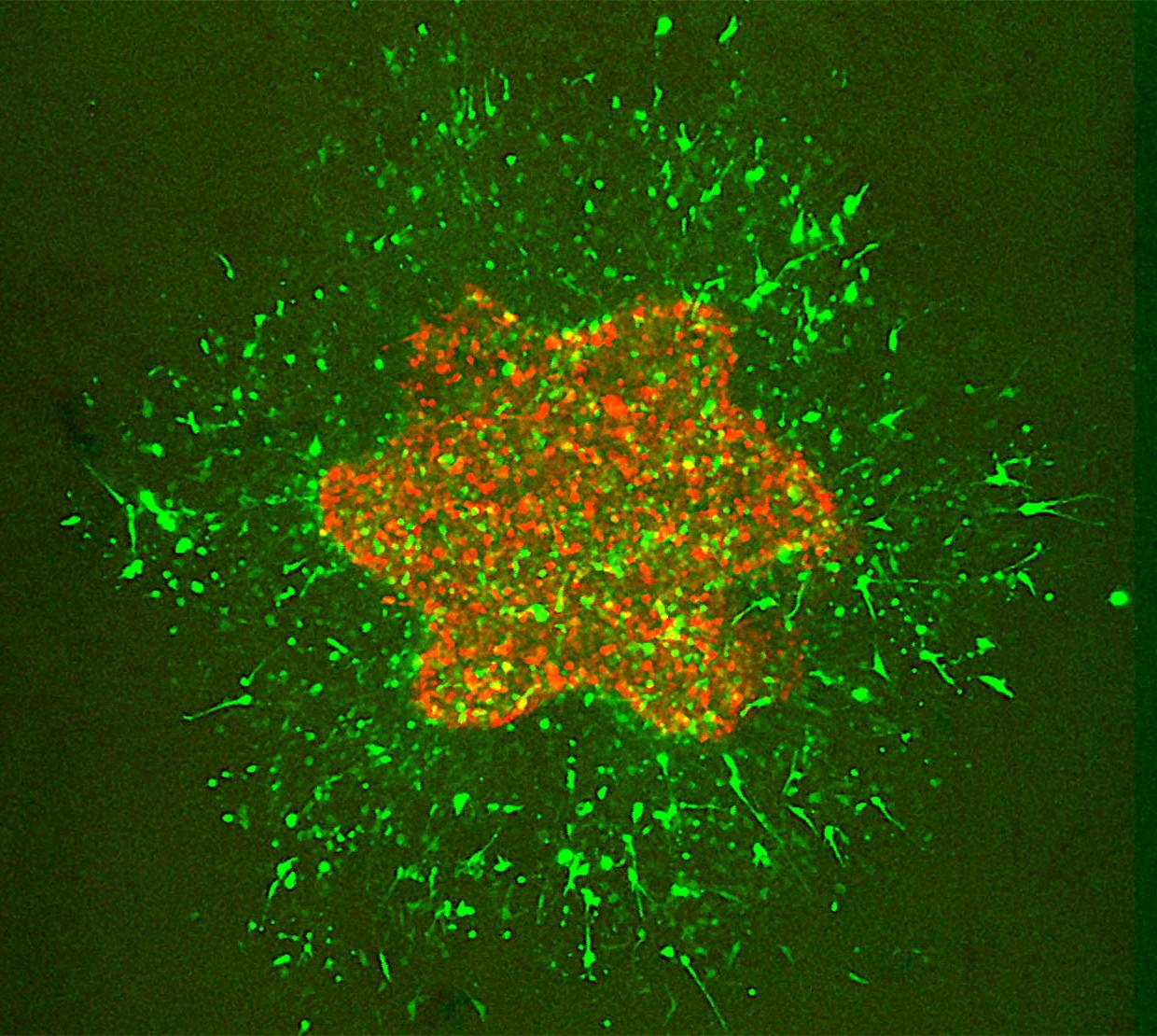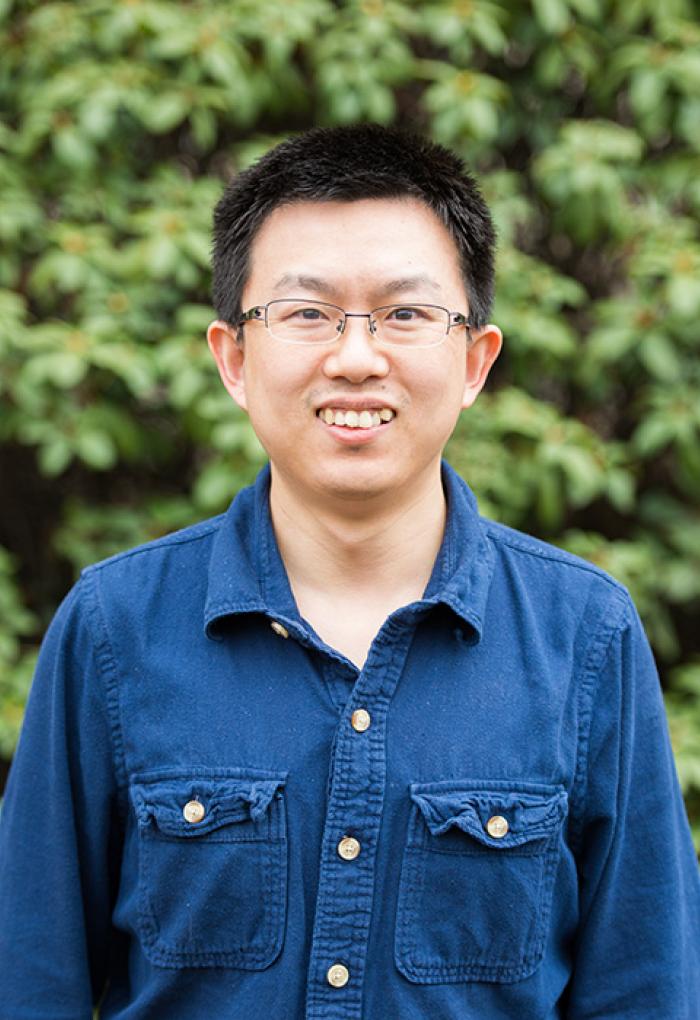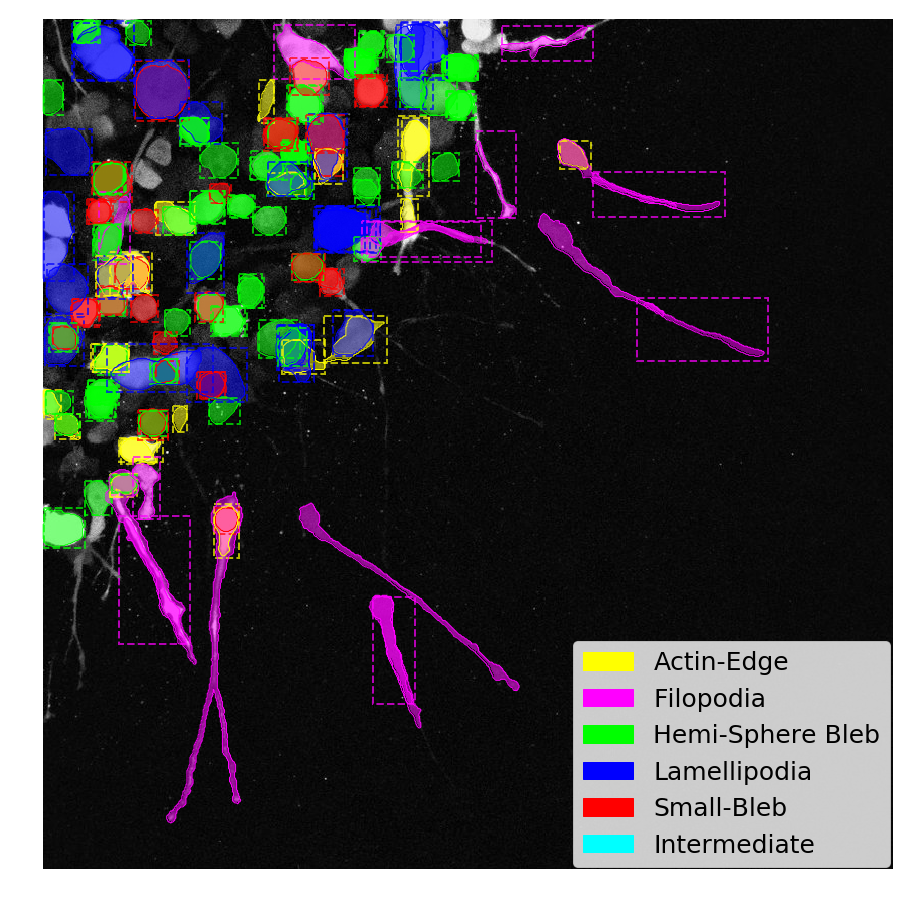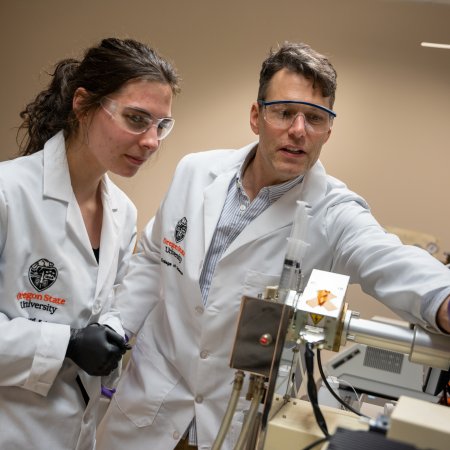It’s hard to stop the motion of cancer cells. To date, all cancer treatments aim to try to stop cell migration early before metastasis starts. These approaches have not tried to stop the cells from moving after metastasis begins. Until now.
Associate Professor of Physics Bo Sun had a breakthrough discovery that moved us closer to making more effective metastatic cancer treatments a reality with tremendous social impact. He and his collaborators are working to uncover the causes and consequences of cancer cell migration phenotype plasticity that contribute critically to the process of cancer metastasis.
It is like a cell is traveling from China to Peru. We can now predict that path. We want to stop it there. We don’t want it going someplace else and metastasize.
Testing breast cancer cells, Sun and his collaborators determined that cancer cells can easily transition from different migration phenotypes via multiple pathways. “They can essentially ‘speak all languages’, “said Sun. Using a combination of machine learning and microscopy, they can predict the movement of cancer cells. The researchers were able to track the migrating cells using microscopy and classify the cancer cells to anticipate a cell’s next move, thanks to machine learning, which used 60 different parameters to anticipate a cell’s next move.






